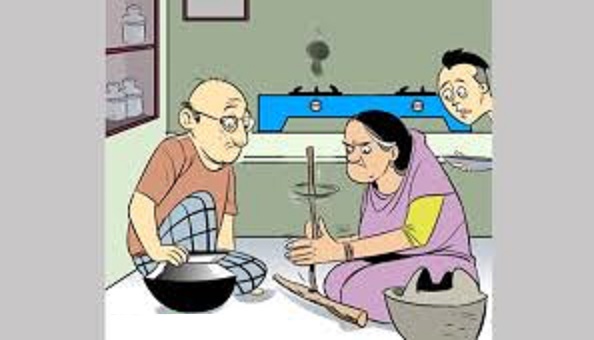An acute gas crisis has gripped the capital and its surrounding areas causing sufferings to both household and industrial consumers.
With the piped gas supply now reduced to nearly half the demand, complaints are pouring in from households to industrial consumers from across the capital Dhaka.
They said that the acute gas crisis upended their daily life increasing the household food expenses and causing daily productions in industries to fall, especially in Gazipur.
‘Our daily production at the apparel factory fell by 60 per cent with the gas supply almost completely suspended since January 13,’ Mahmud Group general manager Sudhangshu Kumar Dutta told.
Government sources and international energy forecasters said that Bangladesh’s gas crisis may ease a little next week but would remain the same more or less until April because of the volatile international LNG market where the supply shortage intensified.
‘We are no stranger to the winter season gas crisis, but we haven’t seen anything like this before,’ said Tania Rahman, a resident of Mahanagar project.
There are areas in Rampura, Banasree, Badda and Azimpur where gas supply lines mostly run dry during daytime.
The gas crisis also turned acute in many parts of Mirpur, Mohammadpur, Goran and Bashabo, where consumers find it difficult to cook food between 9:00am and 4:00pm every day.
‘People are used to seeing the gas crisis abate during the weakened but this year it appeared as a persistent problem as residents are faced with the crisis seven days a week,’ said Ehsanur Rashid, a resident of Bashabo.
It has been a decade since the gas crisis became a household problem during winter thanks to the apparent indifference of the government in solving the problem.
The consumers even continued paying the same as they do during normal gas supply throughout winter for the last decade.
The speculation that the government wants households to switch to liquefied petroleum gas turned a reality with many piped gas consumers also using LPG as alternative energy source.
‘We believe the recurrent piped gas supply crisis is the result of collusion between the government and private businesses,’ said Muntasir Hasan, an Azimpur resident, referring to the abnormal growth in LPG business over the last decade.
After the government stopped giving new piped gas connections to households in 2010, the import of LPG rose to over 10 lakh tonnes in 2020 from only about 60,000 tonnes ten years ago.
Only 15 per cent of piped gas is consumed by household consumers supplied through the same transmission network shared by industrial and commercial consumers.
Households get weak flow round the year competing with big industrial consumers while during winter condensates stand in the way of sending gas to domestic consumers.
The affluent segment of the society may dine out when gas supply falls but low-income people cannot afford such luxury and they either fast or stay half-fed.
‘We have meals once a day,’ said Shahana, a housemaid in Mirpur, who shares a kitchen with about a dozen families and cannot afford to cook twice in a weak flame after working 10 hours outside home.
Gas distributors have always attributed the winter time gas crisis to an increase in household consumption for generating heat.
The explanation is hardly credible for during winter the gas demand falls considerably in the power sector, consuming about 60 per cent of piped gas.
In 2019, the government increased the average gas price by 32.8 per cent promising to ease the gas crisis by importing liquefied natural gas.
But the problem persisted and even worsened.
Rupantarita Prakritik Gas Company Limited officials said that their daily LNG supply fell to the lowest ever since they began its import.
Over the past week the typical winter-time piped gas crisis turned worse from bad after a drastic fall in LNG import intensified supply shortage.
An abnormal increase in LNG price on the international market triggered the acute supply shortage, giving grounds to experts’ opposition to meeting the energy crisis through import.
The import of LNG, which is mixed with domestic natural gas after regasification, makes up a fourth of Bangladesh’s gas production capacity of 3,760mmcfd, less than the demand of 4,000mmcfd.
The latest gas production and distribution report released on Tuesday by Petrobangla showed that the gas supply stood 2,657mmcfd, about 15 per cent less than the previous year.
‘We cut LNG import because of abnormal spot market price,’ said power, energy and mineral resources state minister Nasrul Hamid as he expected the crisis to ease next week.
The import of LNG fell by more than 70 per cent to 200mmcfd on January 19 from 700mmcfd on October 1 in 2020. Bangladesh could never import LNG to its full capacity















